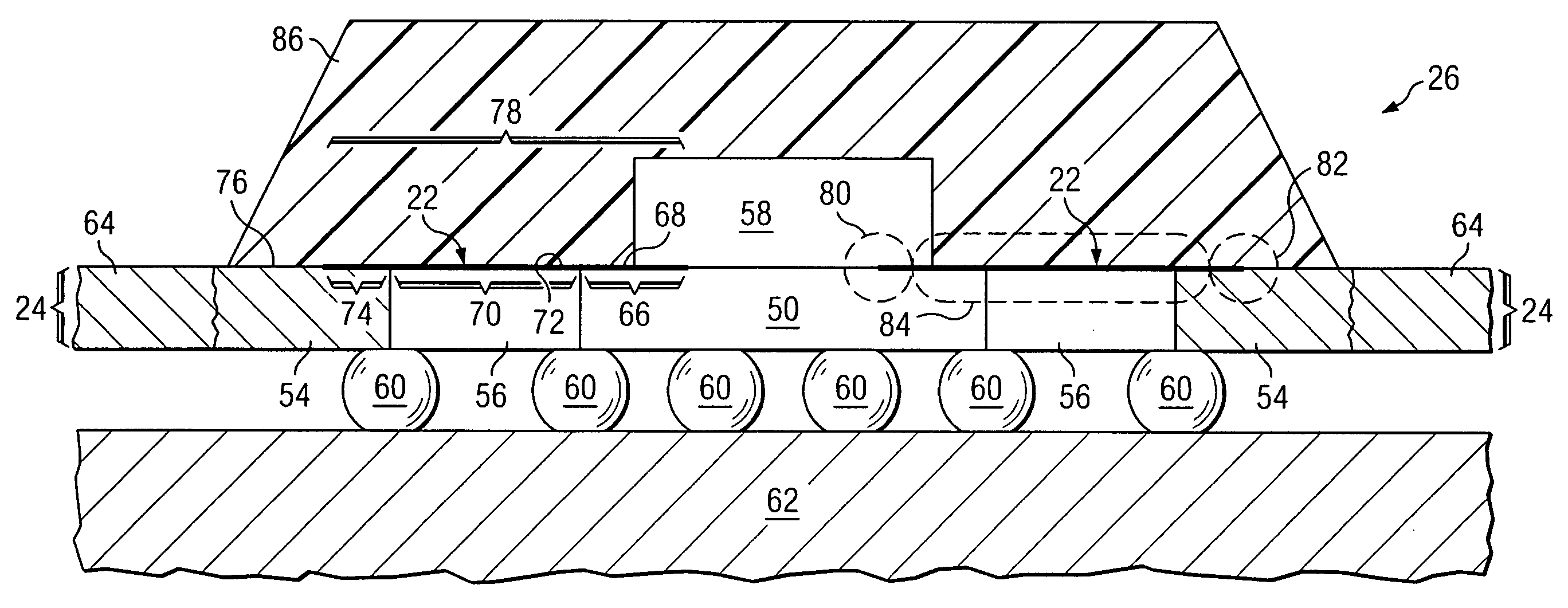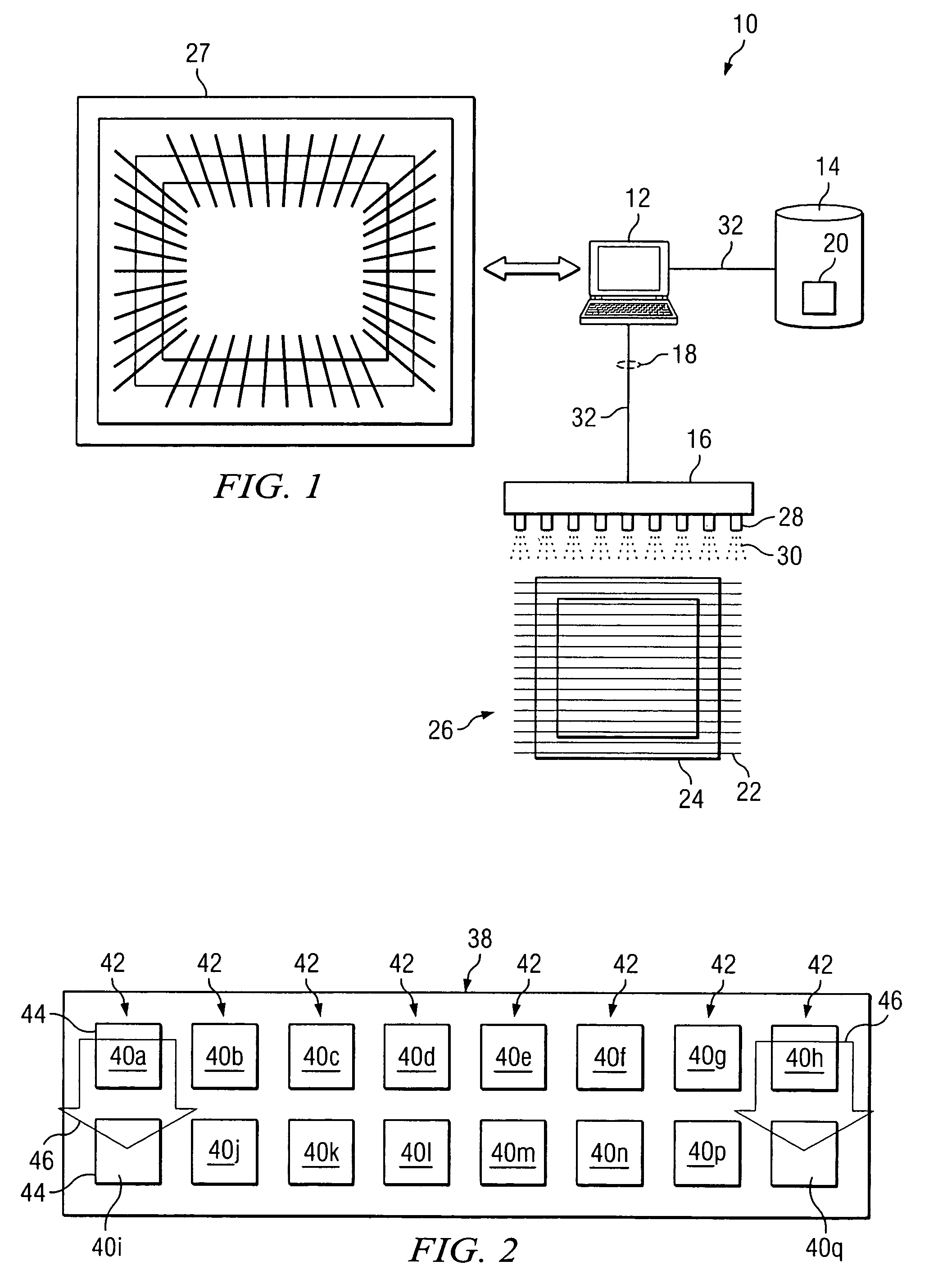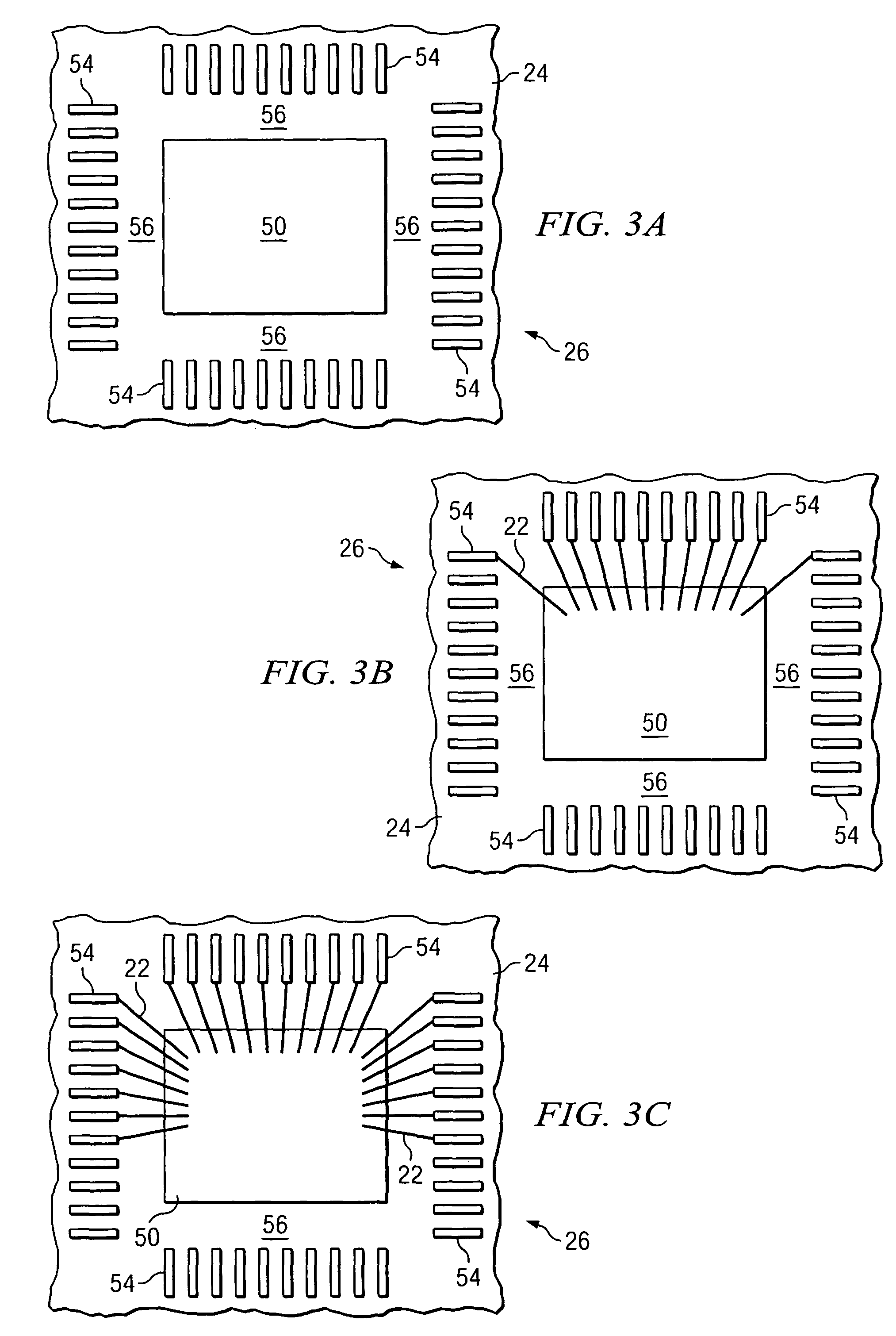Printing one or more electrically conductive bonding lines to provide electrical conductivity in a circuit
a technology of electrical conductivity and bonding lines, applied in the field of circuits, can solve problems such as one or more problems, danger of wire sagging or wire shortage, wires to elements of integrated circuit packages, etc., and achieve the effect of reducing or eliminating the supply of electrical conductivity in a circui
- Summary
- Abstract
- Description
- Claims
- Application Information
AI Technical Summary
Benefits of technology
Problems solved by technology
Method used
Image
Examples
Embodiment Construction
[0015]FIG. 1 illustrates an example system 10 for forming a circuit using one or more electrically conductive bonding lines printed on a substrate. System 10 may comprise a computer system 12, a memory 14, and a printer 16. In general, computer system 12 is operable to generate one or more printing instructions 18 based on bonding data 20 stored in memory 14, and printer 16 is operable to print one or more electrically conductive bonding lines 22 substantially on the surface of a substrate 24 based on printing instructions 18. Electrically conductive bonding lines 22 are operable to provide electrical conductivity between a first element of a circuit 26 and one or more second elements of circuit 26. In one embodiment, electrically conductive bonding lines 22 are used in lieu of standard gold wire bonding.
[0016] Circuit 26 may include an integrated circuit package such as a ball grid array (BGA) type circuit, a leaded package, a printed circuit board package, or any other suitable c...
PUM
 Login to View More
Login to View More Abstract
Description
Claims
Application Information
 Login to View More
Login to View More - R&D
- Intellectual Property
- Life Sciences
- Materials
- Tech Scout
- Unparalleled Data Quality
- Higher Quality Content
- 60% Fewer Hallucinations
Browse by: Latest US Patents, China's latest patents, Technical Efficacy Thesaurus, Application Domain, Technology Topic, Popular Technical Reports.
© 2025 PatSnap. All rights reserved.Legal|Privacy policy|Modern Slavery Act Transparency Statement|Sitemap|About US| Contact US: help@patsnap.com



